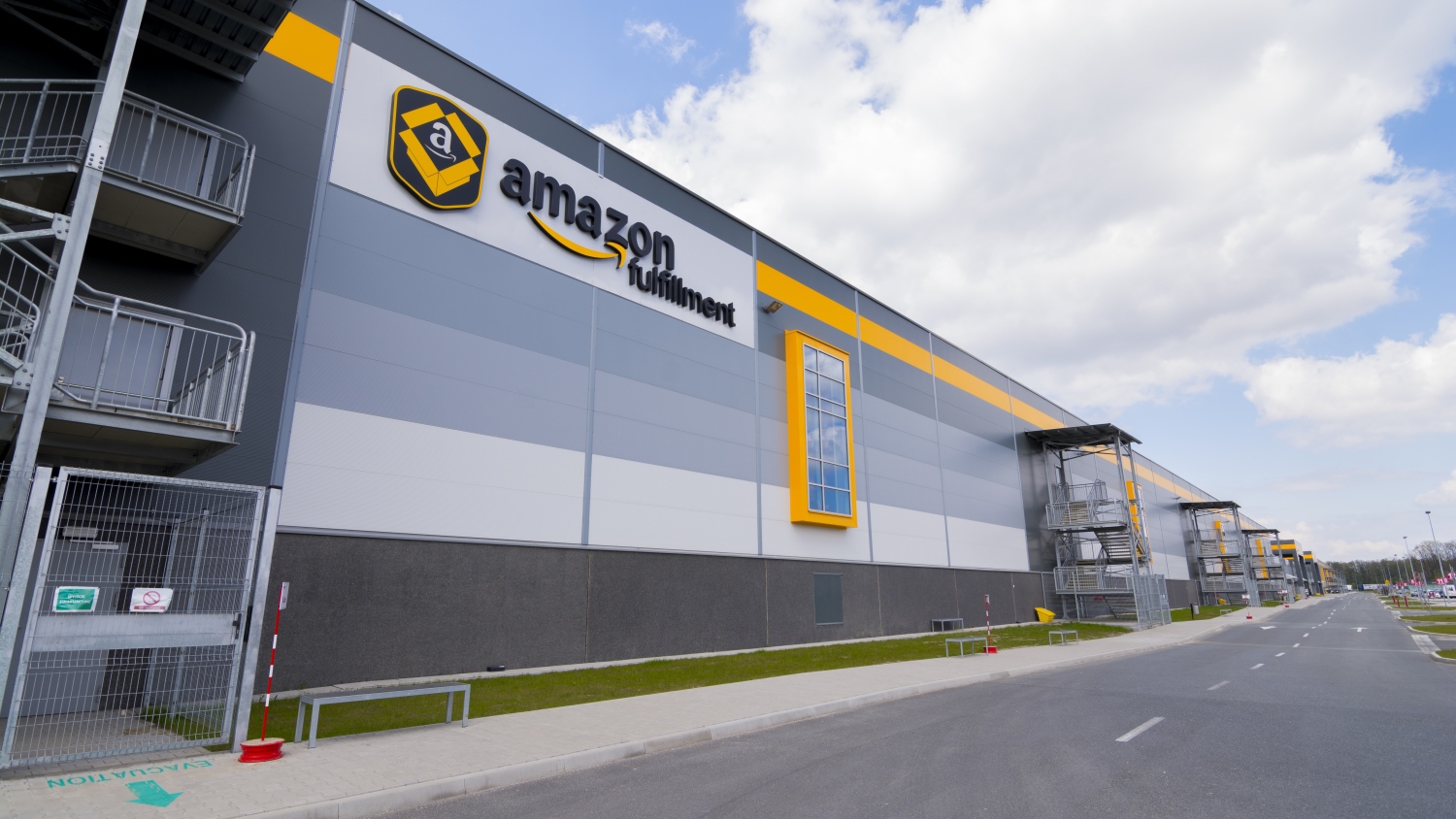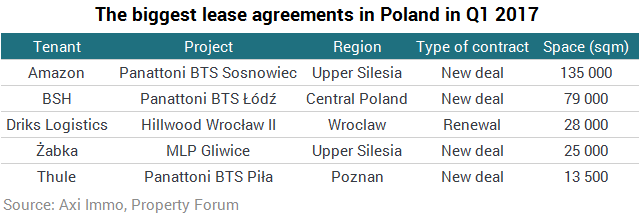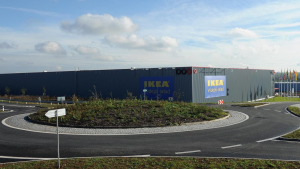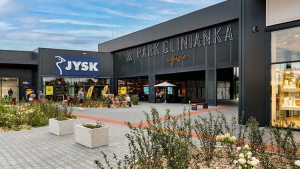
In Q1 2017 a total of 970,000 sqm was leased on the warehouse market in Poland, 42% more than in Q1 2016. Developers put into operation 475,000 sqm and over 1.4 million sqm are under construction. Results for the first quarter of 2017 allow optimistic forecasts for the coming months according to AXI IMMO’s latest report.
Between January and March 2017, gross demand was 970,000 sqm, of which new contracts and expansions accounted for 70%. Such a high volume of leased space in the first months of the year is the result of the finalisation of several large transactions that had a significant impact on the final result on the demand side.
Most warehouse and production space was leased in Upper Silesia, including a transaction for 135,000 sqm for Amazon in Sosnowiec. In total, demand in the region amounted to 330,000 sqm. The best results were recorded in the Warsaw region (198,000 sqm) and Wroclaw (140,000 sqm). After eliminating large transactions of over 40,000 sqm, the average volume of rented units in Poland in Q1 2017 amounted to ca. 4,500 sqm.
The demand structure is dominated by logistics operators and retail chains, whose share in total demand is 63%.

In the first quarter of this year, the biggest increases in new supply took place in Poznan, Upper Silesia and Bydgoszcz, with each location seeing an increase of around 100,000 sqm. Among developers, Panattoni provided the most new space within 14 projects with a total area of over 300,000 sqm. BTS investments accounted for over 50% of the new supply.
A consequence of the positive market situation and the high level of activity among tenants is 1.4 million sqm under construction at the end of March this year. Most new space is being built in Warsaw (350,000 sqm) and Szczecin (291,000 sqm).
Nearly 1 million sqm of warehouse and production space is under construction in the five major markets. Besides Szczecin, development activity in smaller regions was limited. The share of speculative projects remains stable at a level of 30%. In terms of the number of investment projects without secured lease agreements developers Panattoni and Hillwood stand out.
Compared to the last quarter, the vacancy rate has increased slightly from 6% to 6.1%. The vacancy rates are stable despite intensive development activities which were accompanied by high tenant activity. The lowest vacancy level is in Central Poland and amounts to 1.5%, while in Lodz alone there are no free units for rent. The highest increase in the vacancy rate was recorded in Szczecin – from 2.9% to 8.8%, and in Wroclaw – from 6.5% to 8.5%.
Base rents in most regions in the first months of the year remained stable, with an upward trend in the Wroclaw region and selected locations in Upper Silesia. The lowest effective rents are offered by developers in the Warsaw area, Poznan and Silesia. For large areas, it is possible to obtain a rate of less than €2 per square metre. Unlike the previous year, developers are not willing to make big concessions on average-size transactions.
The first months of the year allow optimistic forecasts for the rest of the year on the warehouse market. The magnitude of new demand is built primarily on large transactions by companies that look for deals nationwide, taking into account not only the location but also the availability of workers, proximity to major manufacturers and the business environment.
In addition, despite the high activity of developers, projects in developing storage locations are primarily BTS or pre-let. The relatively low potential of local businesses means that developers tend not to build speculative projects.
The involvement of developers in building new facilities in main markets will remain high. In selected locations in Warsaw, Poznan and Wroclaw market there will be a slight downward trend due to the releasing of large units after the relocation of tenants.



